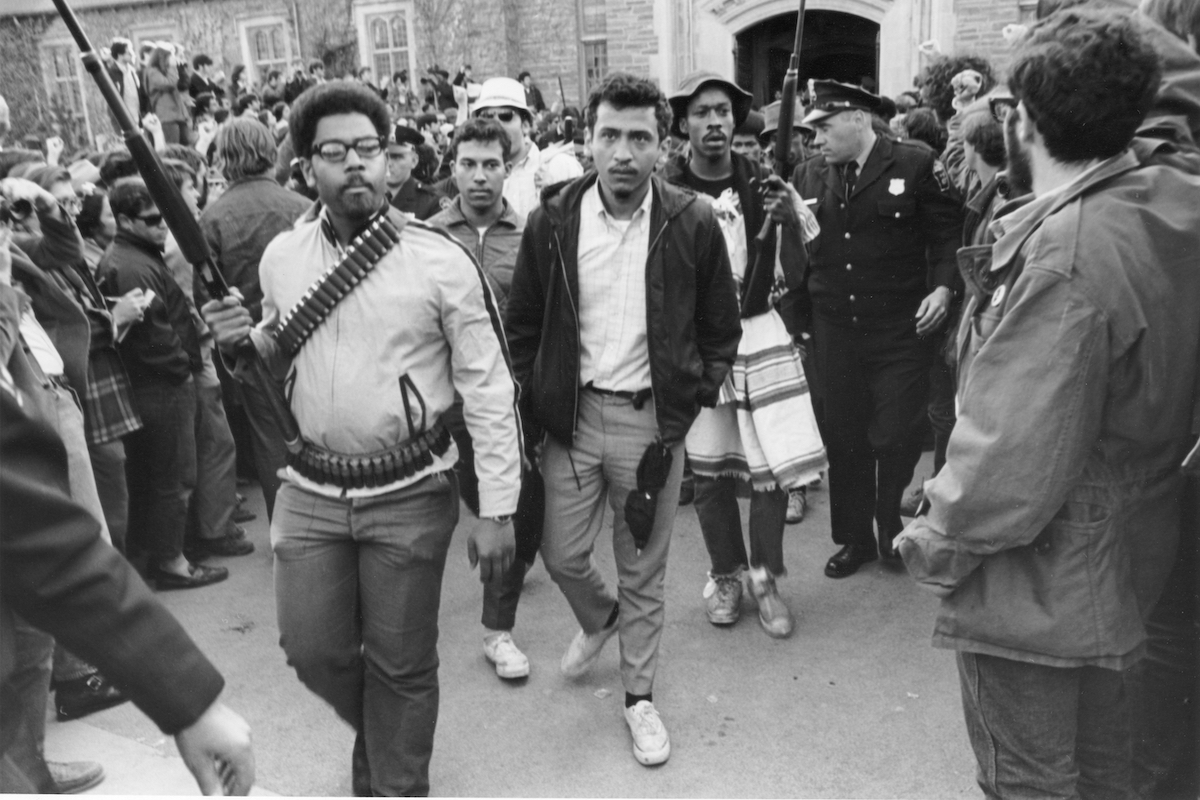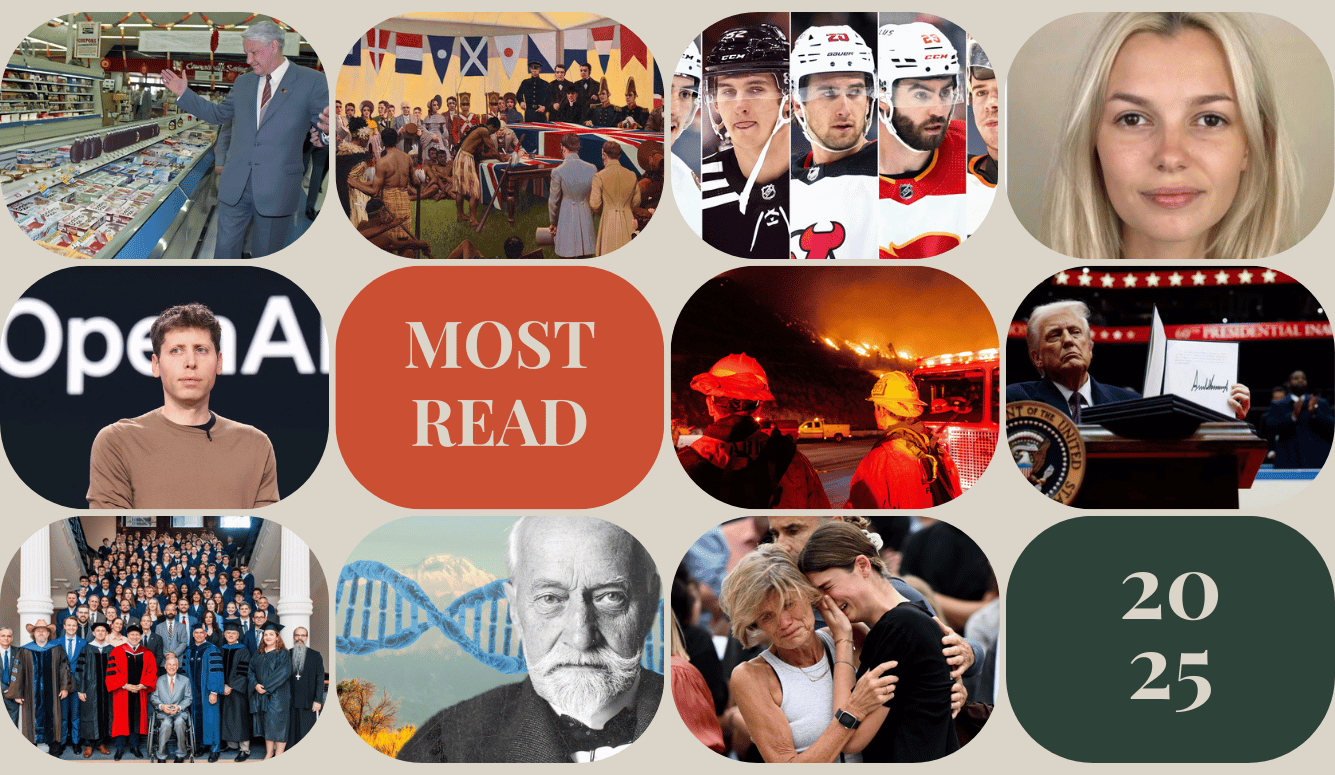Education
Paradise Lost?

A review of The Lost Promise: American Universities in the 1960s by Ellen Schrecker. University of Chicago Press, 616 pages (December 2021).
The 1960s were the tipping point of postwar American history at which the conservativism of the previous decade evolved into an era of growing liberal consensus. Historian James T. Patterson has identified 1965 as the year when the momentum of liberal reform peaked and a gradual unraveling began. The meaning and consequences of those developments remain controversial to this day, and The Lost Promise: American Universities in the 1960s by Ellen Schrecker is a substantial contribution to the already copious literature. While it may not resolve that era’s many contentious debates, it nevertheless adds valuable material to the arguments. As Schrecker points out, “colleges and universities were at the center of American life … the quintessential liberal institution during the heyday of American liberalism.”

Schrecker is best-known for her histories of McCarthyism in higher education (No Ivory Tower, 1986) and the country at large (Many Are the Crimes, 1998). Like this current volume, those works were thoroughly researched, fluently argued, and consistently critical of the Right. Above all, she defended university faculty with a generous interpretation of academic freedom. In The Lost Promise, faculty are again the subjects of Schrecker’s prodigious research. She has apparently read every available memoir and oral history, and she has interviewed 130 mostly radical participants. The distinguishing achievement of this study is the detailed and nuanced depiction of faculty roles and sentiments during that tumultuous decade.
Schrecker concluded No Ivory Tower with the declaration that McCarthyism had silenced the academic Left, and her new book usefully amends that view. The 1950s witnessed considerable pushback against McCarthyite strictures like loyalty oaths and speaker bans on campus. Indeed, Communist Party historian Herbert Aptheker was invited to campuses, not because students wanted to hear his reputedly boring speeches, but because they sought to challenge the bans. The House Un-American Activities Committee, meanwhile, became increasingly anachronistic. In 1962, Operation Abolition, HUAC’s 45-minute film demonizing the 1960 protests in San Francisco, was largely met with derision on US campuses, several of which already harbored significant cohorts of left-wing intellectuals—Michigan, Cornell, Berkeley, and especially the University of Wisconsin, where Studies on the Left had become the first explicitly radical academic journal in 1959. After the 1960 student sit-ins in North Carolina reinvigorated the civil rights movement, Schrecker reports that “almost all the radicals … interviewed for this book had been involved … with the struggle for racial equity.” Dissatisfaction with the status quo and desire for reform were building by the early 1960s, more among faculty than students, until a confrontation at Berkeley changed everything.
The establishment of the Free Speech Movement (FSM) in the fall of 1964 has since attained the status of a legendary melodrama. At issue was a prewar regulation prohibiting political activity on University of California campuses, and student groups initially conformed by organizing at the campus entrance. But when the administration, prompted by vague fears of communist influence, forbade these activities, the students rebelled. Many Berkeley activists were veterans of the civil rights movement and now employed civil disobedience, spontaneously at first, and then with a planned occupation of the Administration Building. Both the eruption of student protest against the university and the resort to civil disobedience were new to modern American higher education, and either alarming or exhilarating, depending on one’s point of view. An obtuse administration kept the crisis roiling by insisting on punishing FSM leaders, but the FSM essentially prevailed when the faculty voted its support.
Although the goals of the FSM were moderate (free speech was, after all, hard to oppose), the movement’s rhetoric was fiery and radical, and the moralism of the civil rights movement it evoked was considerably to the left of the mostly liberal Berkeley faculty back then. More disturbing was the ideological escalation of the FSM speeches to include attacks on the multiversity, impersonal campus bureaucracy, and associations with American capitalism. In addition, students flouted faculty sovereignty over academic matters by demanding participation in educational decisions, including the curriculum. Fearing further inroads by a student mob, a number of Berkeley’s star faculty decamped for other research universities. For the rest, the FSM caused deep political divisions within academic departments. Berkeley was unique, but civil disobedience, student power, and radical rhetoric would soon spread across American academe.
Organized opposition to the war in Vietnam began only months after the Berkeley confrontation. Faculty at the University of Michigan conducted an antiwar teach-in in March 1965, the same month that American combat troops were introduced into South-East Asia and regular bombing of North Vietnam began. The teach-ins multiplied and circulated relevant information about this little-known region, as well as a good deal of indignation. There were sound pragmatic reasons to oppose the war—the French experience suggested it was unwinnable and the US arguably had no national interests at stake. But the teach-ins were energized by a conviction that the war was also morally wrong. Moral fervor infused the antiwar movement from its inception, and Schrecker chronicles how the scope of protests grew to encompass any activities connected with the war, including defense research, the Reserve Officers Training Corps, and the draft. By the summer of 1967, “the academic establishment had pretty definitively turned against the war,” she notes, while “openly antiwar professors continued to circulate petitions, place ads, hold teach-ins, and march in demonstrations.” Schrecker captures the pervasive angst so widely felt in these years: “It is impossible to stress enough how thoroughly the Vietnam War permeated the waking lives of students and faculty dissidents during the long sixties. … Our shame, our anger, and ultimately our inability to stop the horror destroyed our trust in the liberal order.”
After 1965, the antiwar initiatives were led by increasingly disruptive students. However, missing from this volume is an account of the role of Students for a Democratic Society. Considering its abundant coverage, Schrecker understandably leaves the student movement to others, but the radical goals of SDS were a fundamental feature of the traumas of the 1960s. By 1965, SDS was already committed to the revolutionary goal of overthrowing “The System.” The issues it selected for emphasis each year were intended to mobilize (manipulate) students on behalf of what was known as “the Movement,” and targeted the Institute for Defense Analysis, ROTC, Dow Chemical recruiters, university complicity, and the draft. As Mark Rudd, the antihero of the Columbia crisis, later bragged, “we manufactured the issues,” substantive consideration of which meant contending with the Movement’s bizarro ideology.
From fall 1967 to spring 1970, things became chaotic: “On campus after campus,” Schrecker writes, “all sides found themselves caught up in events that were unprecedented, disorienting, and scary.” Under these confusing circumstances, it may be presumptuous to pass judgement on individuals, and Schrecker’s description of the agonizing choices faced by faculty members captures this turmoil well. Faculty largely disapproved of student disruptions, but amnesty for protesters was always a “nonnegotiable demand.” When the Cornell faculty attempted to reassert its authority, the threat of student violence forced a craven capitulation, publicized worldwide.

Faculty intervention at Columbia, meanwhile, only served to prolong the crisis. Faculty simply lacked the power to mount an effective resistance in these situations, not least because they were badly divided over punishment/amnesty, police busts, black studies, critiques of the university, and war-related issues. Moreover, faculty most involved with these issues were concentrated in the humanities and social sciences and they were usually a minority. Faculty in the sciences, business, and engineering were, with a few exceptions, largely uninvolved in the successive campus crises.
Instead, left-wing faculty nonetheless had a substantial and disproportionate impact on their academic fields. They organized radical caucuses (18 are listed, three in the sciences) and provoked controversies in their respective disciplinary associations. They attacked the academic standard of value-neutral scholarship and pressured their organizations to take political stands, principally against the war but on other causes as well. They successfully challenged the reigning paradigms and methodologies of their fields and forced the journals and societies to incorporate these new perspectives. And New Left rhetoric was often withering, accusing the academic establishment of upholding “Western capitalist imperialism” or preserving “the cultural hegemony of the elite.” As the New Left disintegrated into squabbling factions after 1970, at least some academic radicals became more focused on scholarship, favoring Marxist interpretations that gave these beliefs an academic grounding.
Only a relatively small number of faculty embraced the revolutionary goals of the Movement. In 1967, veteran New Left activists (often SDS graduates) formed the blandly named New University Conference. Their initial conundrum was how to reconcile professional identity with dedication to the political struggle for a “new, American form of socialism and to replace an educational and social system that is an instrument of class, sexual and racial oppression.” NUC activists organized trips to communist Cuba, but they also acted locally to promote radical change in departments and on campuses. In 1970, the NUC had nearly 2,000 members in 60 university chapters. Just two years later, the organization succumbed to the centrifugal rivalries afflicting the far-Left, but the politics of its members changed little.
Schrecker employs a bloodhound’s nose for violations of academic freedom, although her victims were admittedly “some of the profession’s squeakiest wheels, incendiary radicals who viewed themselves more as revolutionaries than scholars and teachers.” One such revolutionary, Stanford English professor and Maoist H. Bruce Franklin, was the only tenured professor fired by a major university. After “several years in purgatory” (teaching at Wesleyan and Yale!), he received a tenured appointment at Rutgers-Newark. Staughton Lynd, who was virtually a full-time agitator, was (understandably) denied appointments by several boards of trustees despite departmental approvals. And Indiana State suspended an instructor who burned an American flag in class. But these cited examples are thin gruel compared to the overwhelming reality that colleges and universities indulgently tolerated outrageous and often illegal behavior. Administrators were well aware that reprimands would unleash the wrath of the student Left and probably most of the faculty.
This otherwise admirable study has a curious frame. The lost promise of the title apparently refers to the academic Left’s failure to “move both the university and perhaps even the whole country toward justice and true democracy.” When “academic leaders could not or would not satisfy the radicals’ mostly reasonable demands, their campuses seemed to spin out of control,” and “the democratic vision of universal mass higher education evaporated.” What was “lost,” she writes, “was the promise that that the university could make the American dream come true.” As usual, democracy, justice, and reasonableness are invoked on behalf of leftist objectives pursued by a radical minority. The author then blames a “conservative onslaught” for a litany of woes that have afflicted higher education ever since. This depiction of higher education is not merely misleading, it is historically incorrect.
The Left in the 1960s had nothing but contempt for the American dream of upward mobility. It certainly had no vision of universal higher education, more often advising students to drop out entirely. In that decade, the consensus still held that a college education was reserved for the academically qualified. In the 1970s, however, the higher education establishment embraced the chimera of “college for all” and created experimental and adult institutions to advance it. Legislation passed in 1972 established federal student aid, including what are now called Pell Grants, and state funding founded 250 additional institutions of higher education between 1970 and 1975. And while Schrecker complains of ubiquitous sexism, the 1970s was the decade of the Women’s Movement, women’s studies, the hiring of women faculty, and women becoming the majority of students—all helped appreciably by women radicalized in the late 1960s.
Schrecker concludes with a decidedly dystopian depiction of higher education—unaffordability and indebtedness for students; impoverishment for adjunct faculty—all of which she blames on conservative and corporate opposition to the imagined leftist “promise.” But these exaggerations are clichés that have little connection to the 1960s. And there is nary a word of recognition that university campuses today are more uniformly leftist than they were then. So while Schrecker’s new book offers an insightful and original tour of a tumultuous decade, there is still much to argue about.






